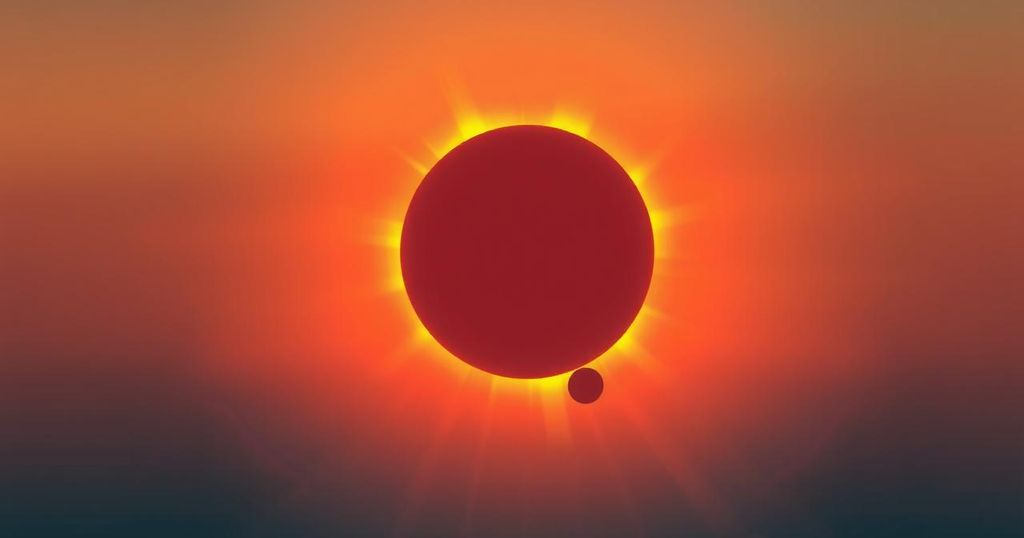Surya Grahan 2025: Safety Tips and Viewing Details for the Solar Eclipse

On March 29, 2025, a partial solar eclipse will be visible in areas such as the US and Canada, but not in India. It will create a rare double sunrise illusion, with peak times and durations specified. Observers are advised on health and safety protocols, emphasizing the importance of certified eclipse glasses for safe viewing.
On March 29, 2025, a partial solar eclipse will occur, characterized by the Moon passing between the Earth and the Sun, partially blocking sunlight. This event is noteworthy as it is described as a double sunrise eclipse, presenting a rare opportunity for observers to witness the illusion of two sunrises. Unfortunately, the eclipse will not be visible in India; regions in the US, Canada, Greenland, and Iceland will enjoy prime viewing locations.
For those desiring to view the solar eclipse, traveling to observable areas or watching the event live online are viable options. The eclipse’s timeline in Indian Standard Time is as follows: it begins at 2:20 PM, peaks at 4:17 PM, and concludes at 6:13 PM, with a total duration of approximately four hours. Interestingly, the eclipse could create a fascinating scenario with a perception of two sunrises.
The eclipse will be visible from eastern Canada to northern Russia, with visibility stretching to parts of Europe, northeastern North America, and northwest Africa. It will initiate around 08:50 GMT and finish by 12:43 GMT. The obscuration of the Sun will vary; in northeastern Canada and Greenland, up to 90% of the Sun may be obscured, while regions like France might only experience 10 to 30% obscuration depending on the locale.
Health safety while observing a solar eclipse is critical. According to NASA, protective gear such as certified eclipse glasses is essential when viewing the Sun. Regular sunglasses are insufficient. Eclipse glasses should meet ISO 12312-2 safety standards and be undamaged before use. It’s advised to supervise children to ensure proper usage of protective eyewear and never to use eclipse glasses with telescopes or cameras due to the risk of eye damage.
The only time it is safe to view the Sun without protective glasses is during totality, when the Moon entirely covers the Sun. As soon as any part of the Sun becomes visible again, protective gear must be worn. For prolonged outdoor viewing, it is also advisable to wear sunscreen, a hat, and protective clothing to prevent sunburn and heat-related issues during the eclipse event.
The March 29, 2025, solar eclipse will not be visible in India but will provide a unique viewing experience in selective regions like parts of the US and Canada. Proper safety measures, including the use of certified eclipse glasses and protective clothing, are essential for ensuring a safe viewing experience. Observers should prepare for an engaging event characterized by a rare dual sunrise phenomenon while being mindful of health and safety guidelines.
Original Source: www.hindustantimes.com







